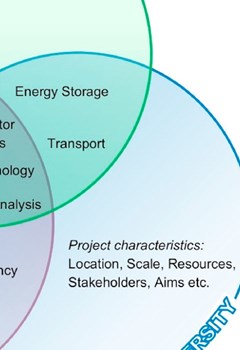Authors: Callum Rae, Sandy Kerr, M. Mercedes Maroto-Valera
Published in: Renewable and Sustainable Energy Reviews Volume 131, October 2020, 110020 https://doi.org/10.1016/j.rser.2020.110020
Date Published: 10 July 2020
Abstract:
As the transition towards a more sustainable, distributed energy model has continued to gather pace, the number of Smart Local Energy Systems (SLES) projects has increased. Ranging in age, size, location and complexity, these projects have faced a series of technical, social and economic challenges, with varying degrees of success. This paper presents the results of a systematic, state-of-the-art literature review with the aim of identifying the main technical barriers experienced by SLES in the UK. Originality is provided in the discussion of the key barrier areas identified during the review, which include those posed by multi-vector integration, grid connection, energy storage, smart technology and electric vehicles. The site-specific nature of SLES is identified as limiting the applicability of specific technical barriers, as is the need to view technical barriers within their respective social, economic and regulatory contexts. From the findings emerge three fundamental underlying technical challenges which face all SLES: diversity, uncertainty and integration. The findings also indicate that a more detailed understanding of site and context-specific barriers – and the relationships between them – is required in order to facilitate the mitigation or removal of technical barriers to the upscaling of SLES.
Keywords: Community energy; Multi-vector systems; Energy system analysis; Distributed generation; Smart technology
Insights for EnergyREV:
This review provides insight into the technical barriers to the upscaling of SLES as reported in academic and grey literature sources. Insights include the need to view technical barriers within the context of non-technical ones and the difficulties posed by the highly context-specific nature of SLES.
